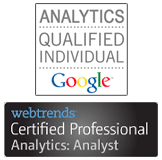So, the method we were using for our PPC was very similar to our technique for organic search--create high relevancy topical and category pages and point search engines at them. For PPC, this meant using them as landing pages. For organic, this meant keyword optimization and time. Visitors would land on a category page, for instance, then click into a product from there and request info or read product support documents if they wanted to learn more.
Overall the results were not stunning. The first half of the year averaged somewhere under 4% overall conversion rate for PPC pointing at the site in general on pretty strong volume. This conversion rate improved slightly over the months, moving up from about 2% to just under 4%. Normally, I would not think this is too bad. However, it was very expensive and the ROI models were hard to prove.
How one PPC landing page changed everything
So, we took another tack. We came up with a specific promotion that was guaranteed to catch attention and built a dedicated landing page with the request info form right there. We also limited any links to things that were absolutely necessary thereby limiting the opportunities for visitors to jump off.We pointed all our PPC at this page and the results were outstanding. We instantly went to a 15% conversion rate on our spend in the first week and got it up to almost 17% by the end of the campaign (8 weeks later). The ROI models came back down to earth and the sales team got the activity they were looking for.
The campaign was such a success, we converted it over to a perennial offer, reworked the keywords and ads, built new landing pages, and sent it back out as our default PPC campaign. After making a few small tweaks based on things we learned, our onsite conversion rates are now hovering around 20% with some important keywords converting at 30%-35%!
Of course, I can't give specific information, but you'll just have to trust me on this. The whole program has turned into one of the most successful marketing efforts we've run in the last couple years at least.
What we learned
How did we make the jump from fump to lead pump? Here are some key learnings:- Targetted, single purpose landing pages are way, way better at converting campaign traffic than multi-purpose interior website pages. This may seem like a no brainer, but I learned it the hard way. Plus, landing pages typically don't have the same content review process that product pages do which makes it easier to be flexible and effective.
- Limit navigation on the form to almost nothing. If the purpose of the campaign is to generate leads, then absolutly everything on that page has to be geared toward getting leads. This is not the time to be expansive. This is the place to be very targetted and direct.
- If there are high bounce rates and low conversion rates, then test messaging to figure out what visitors are looking for. Provide a PDF download. Offer one link to more information. Very limited message testing is a good idea as long as it is very limited.
- Put the action item on the page above the fold. Not the call to action, but the action item itself. Embed the form above the fold and make it seem like the best thing any visitor can do. Make the PDF sing. Make conversion a very simple, one step process.
- Make your forms short. 4 fields, not an interview. Let sales do the interviewing.
- Put some sort of segmentation indicator on the form. An annual revenue drop down list. A number of offices drop down list. Industry focus checkboxes. Whatever your key segmentation is, put a simple interactive item on your landing page so you can tell the difference between different types of visitors. Then look at the behavior of these segements.
- Benefits are more important than features.
- People like to get things for free more than they like to get discounts. If you are giving 20% off a product or service, find a feature of that product that is worth the value of a 20% discount and call it "Free". People will pay more attention.
Overall, we've rewritten almost every benchmark for successful performance of a marketing campaign. As we continue to tune up the PPC campaign, I'm looking forward to even better successes as we continue to optimize.


No comments:
Post a Comment